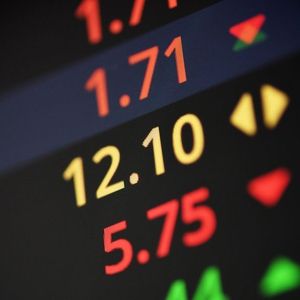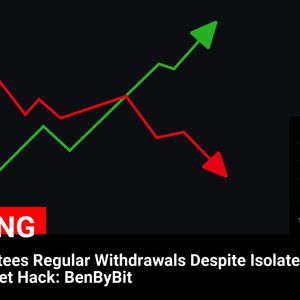Gold, often seen as a safe-haven asset, experienced a minor setback on Monday, relinquishing the $2,900 level during the latter half of the European trading session. This dip occurred amidst a relatively quiet macroeconomic calendar in the US, which was observing President’s Day. However, the calm surface belies the undercurrents of geopolitical tensions and potential shifts in economic policy, keeping traders on edge. Why Did Gold Price Retreat from $2,900? After initial attempts to reclaim $2,900, Gold price (XAU/USD) softened as the European session progressed. Several factors contributed to this: Lack of US Market Participation: With US markets closed for President’s Day, trading volumes were thinner than usual, potentially exaggerating price movements. Profit-Taking: Following a near 1.5% decline on Friday, some traders might have engaged in profit-taking at the start of the week, contributing to the downward pressure. Calm Before the Storm?: The macroeconomic calendar was light, but the week ahead is packed with potential market-moving events, leading some investors to adopt a cautious stance. Geopolitical Tensions: Will Ukraine Talks Ignite Gold Volatility? Geopolitical tensions are once again taking center stage, with headlines surrounding Ukraine dominating market discussions. A high-stakes meeting between US President Donald Trump and Russian President Vladimir Putin is scheduled in Saudi Arabia to discuss peace in Ukraine. Notably, neither Ukraine nor European representatives are invited to these talks, adding an element of uncertainty and intrigue. Impact on Gold: Geopolitical uncertainty often fuels demand for safe-haven assets like gold. Any escalation or unexpected developments from these talks could trigger renewed interest in gold, potentially pushing prices higher. Conversely, signs of de-escalation could dampen gold’s appeal. Fed Speakers in Focus: Decoding the Economic Outlook Despite the US holiday, the Federal Reserve remained active, with three Fed speakers scheduled to deliver remarks on Monday. In a data-light day, these speeches become crucial for deciphering the Fed’s current thinking on the economy and future monetary policy. Key Fed Speakers and Topics: Patrick Harker (14:30 GMT): Philadelphia Fed President Harker spoke on the economic outlook at the Central Banking Series Conference in the Bahamas. Michelle W. Bowman (15:20 GMT): Fed Governor Bowman addressed the economy and bank regulation at the American Bankers Association Conference in Phoenix, Arizona. Christopher J. Waller (23:00 GMT): Fed Governor Waller discussed the economic outlook at the UNSW Macroeconomic Workshop in Sydney, Australia. Market Sensitivity: Investors closely monitored these speeches for any hints about the Fed’s stance on inflation, interest rates, and economic growth. Hawkish signals could strengthen the US Dollar and potentially weigh on gold, while dovish comments might provide some support for the precious metal. Tariffs on the Horizon: A Double-Edged Sword for Gold? President Trump’s plans for reciprocal tariffs are generating significant market buzz. The potential imposition of new levies, particularly on automobiles as soon as April 2nd, as reported by Bloomberg, could heighten global trade tensions. Tariffs and Gold – A Complex Relationship: Scenario Impact on Gold Increased Trade Tensions due to Tariffs Potential increase in safe-haven demand for gold as economic uncertainty rises. Tariffs Lead to Higher Inflation Gold can act as an inflation hedge, potentially increasing its attractiveness. Tariffs Strengthen the US Dollar A stronger dollar can sometimes exert downward pressure on gold prices, as gold is often priced in dollars. Senator Lummis and Bitcoin: A New Reserve Asset? Adding another layer to the financial narrative, Senator Cynthia Lummis proposed adding Bitcoin to US reserves, citing its transparency and accessibility. While this proposal is still in its early stages, it highlights the evolving landscape of reserve assets and the potential for cryptocurrencies to play a more significant role alongside traditional assets like gold. Technical Levels for Gold Price: What to Watch? From a technical perspective, Gold price is navigating key support and resistance levels: Support Levels: Immediate support lies at $2,859 (S1), followed by $2,836 (S2). A break below $2,836 could open the door to further declines towards the significant $2,790 level (October 31, 2024 high). Resistance Levels: The Daily Pivot at $2,899 is the initial hurdle to overcome. Beyond that, $2,922 (R1) and $2,962 (R2) represent key resistance levels. The psychological barrier of $3,000 remains a significant upside target. Trading Strategy: Traders should closely monitor geopolitical developments, Fed commentary, and tariff-related news. A sustained break above $2,900 could signal renewed bullish momentum, while a drop below $2,859 might indicate further weakness. Conclusion: Gold in the Balance Amidst Global Crosscurrents Gold’s retreat from $2,900 on a calm Monday reflects the market’s cautious mood as it braces for a week packed with potential catalysts. Geopolitical tensions surrounding Ukraine, ongoing scrutiny of Fed speakers ‘ pronouncements, and the looming specter of new tariffs are all contributing to the uncertainty. While Gold price remains a favored safe-haven asset, its near-term direction will likely be dictated by these complex global crosscurrents. Investors will need to remain vigilant and adapt their strategies as these narratives unfold. To learn more about the latest Forex market trends, explore our article on key developments shaping Gold price volatility.



















